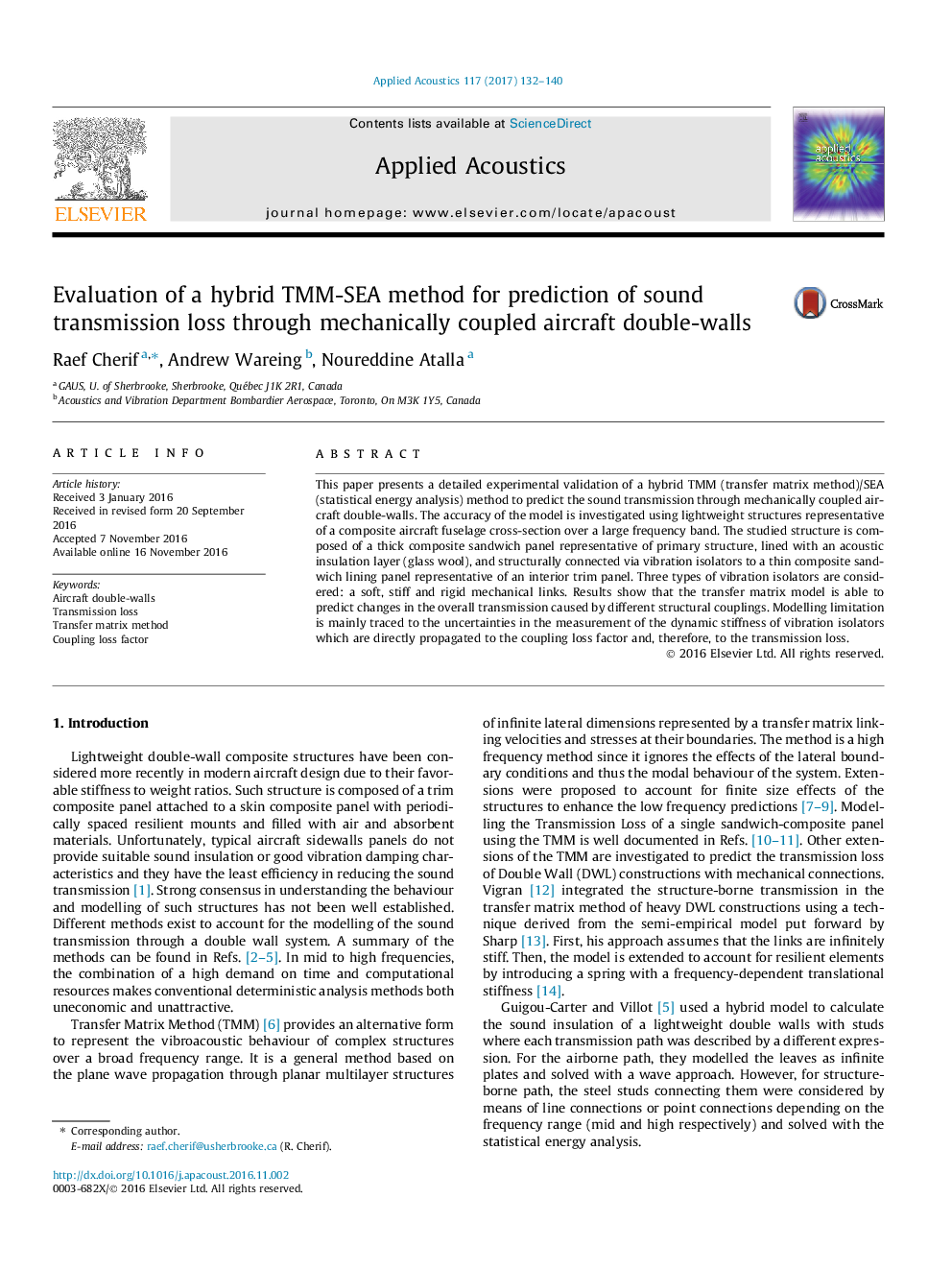| Article ID | Journal | Published Year | Pages | File Type |
|---|---|---|---|---|
| 5011013 | Applied Acoustics | 2017 | 9 Pages |
Abstract
This paper presents a detailed experimental validation of a hybrid TMM (transfer matrix method)/SEA (statistical energy analysis) method to predict the sound transmission through mechanically coupled aircraft double-walls. The accuracy of the model is investigated using lightweight structures representative of a composite aircraft fuselage cross-section over a large frequency band. The studied structure is composed of a thick composite sandwich panel representative of primary structure, lined with an acoustic insulation layer (glass wool), and structurally connected via vibration isolators to a thin composite sandwich lining panel representative of an interior trim panel. Three types of vibration isolators are considered: a soft, stiff and rigid mechanical links. Results show that the transfer matrix model is able to predict changes in the overall transmission caused by different structural couplings. Modelling limitation is mainly traced to the uncertainties in the measurement of the dynamic stiffness of vibration isolators which are directly propagated to the coupling loss factor and, therefore, to the transmission loss.
Related Topics
Physical Sciences and Engineering
Engineering
Mechanical Engineering
Authors
Raef Cherif, Andrew Wareing, Noureddine Atalla,
